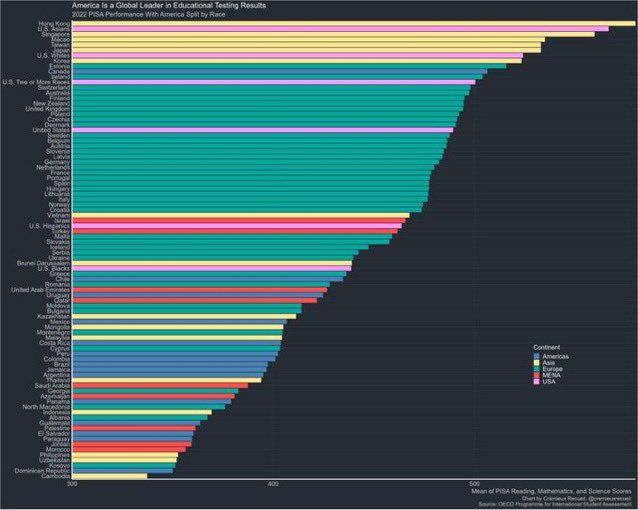
The United States has long stood as the world’s economic powerhouse, boasting a GDP that eclipses other wealthy nations. Adjusted for purchasing power, the US economy is four times larger than Japan’s, five times Germany’s, and seven times the UK’s. Even on a per capita basis, Americans enjoy a staggering $56,000 in annual GDP—outpacing European counterparts by 20–40%. But what fuels this relentless growth? Economist Martin Feldstein’s analysis reveals ten systemic advantages that explain America’s enduring edge. Let’s unpack these pillars of prosperity.
1. Entrepreneurial Culture: Risk-Taking as a National Ethos
America’s economic DNA is steeped in entrepreneurship. Unlike many cultures that stigmatize failure, the US celebrates risk-taking. Silicon Valley’s mantra of “fail fast, fail often” permeates industries, encouraging innovators to iterate rapidly. Consider how companies like Airbnb and Uber disrupted traditional sectors despite early setbacks—a testament to America’s tolerance for experimentation.
- Startup Density: The US averages 1,200 startups per million people, dwarfing the EU’s 650.
- Academic Spin-offs: MIT alone has birthed 30,000 active firms, generating $2 trillion annually.
- Cultural Icons: Figures like Elon Musk and Oprah Winfrey symbolize the self-made success story, inspiring new generations.
2. A Financial Ecosystem Built for Innovation
Access to capital separates the US from nations reliant on traditional banking. America’s venture capital sector, valued at $345 billion in 2023, funds 65% of global tech startups. Meanwhile, decentralized community banks (over 7,000 nationwide) provide localized lending, fostering small businesses from Nashville to Nevada.
Key Mechanisms:
- Angel Investors: Affluent individuals inject $25 billion annually into early-stage ventures.
- IPO Readiness: NASDAQ’s flexible listing rules enable firms like Zoom to go public faster than in EU markets.
3. World-Class Universities: Engines of Discovery and Talent
US institutions dominate global rankings, with 15 of the top 20 universities (QS World Rankings 2023). These hubs don’t just produce research—they commercialize it. Stanford’s ties to Silicon Valley and Boston’s Route 128 corridor exemplify academia-industry symbiosis.
Impact Metrics:
- Patent Leadership: US universities filed 8,200 patents in 2022, triple Germany’s output.
- Global Talent Retention: 80% of international STEM PhDs stay post-graduation, per NSF data.
4. Agile Labor Markets: Mobility Over Bureaucracy
Europe’s rigid labor laws contrast sharply with America’s fluid job market. Just 6.7% of US private-sector workers are unionized (vs. 21% in Germany), enabling rapid hiring/firing. Right-to-work laws in 27 states further enhance employer flexibility.
Case Study: Texas’s tech boom attracted 25,000 Californians in 2022, drawn by no income tax and lighter regulations.
5. Demographic Dynamism: Growth Through People
A fertility rate of 1.66 (above Europe’s 1.53) and 1 million annual immigrants sustain America’s workforce. Skilled migrants fill critical gaps: 55% of US unicorn startups have immigrant founders (National Foundation for American Policy).
Policy Levers:
- H-1B Visas: 85,000 issued yearly for specialized roles.
- STEM Incentives: Optional Practical Training (OPT) lets international grads work 3+ years without sponsorship.
6. The American Work Ethic: More Hours, Fewer Safety Nets
Americans work 300+ more hours annually than Germans, driven by cultural norms and policy. With welfare spending at 18% of GDP (vs. France’s 31%), the US prioritizes earned success over guaranteed safety nets.
Controversy & Balance: Critics argue this exacerbates inequality, yet 67% of workers report satisfaction in a 2023 Gallup poll—higher than in Scandinavia.
7. Energy Independence: Powering Prosperity
The shale revolution transformed the US into a net energy exporter by 2020. Private mineral rights (unique to North America) spurred innovation: fracking slashed oil production costs by 40% since 2010.
Geopolitical Edge: LNG exports to Europe surged 150% post-Ukraine war, cementing US influence.
8. Smarter Regulation: Oversight Without Strangulation
EU’s GDPR and MiCA laws contrast with America’s sector-specific approach. The JOBS Act of 2012 democratized startup investing via crowdfunding, raising $1.1 billion for SMEs in 2022.
Room for Improvement: Overly complex zoning laws still hinder housing development in cities like San Francisco.
9. Limited Government: Unleashing Private Potential
US government spending (38% of GDP) trails Europe’s 44–57%, leaving more capital in private hands. Corporate taxes, slashed to 21% in 2017, remain below Germany’s 30%.
Debt Dilemma: While national debt exceeds $31 trillion, private sector R&D investment ($700 billion) offsets public constraints.
10. Competitive Federalism: States as Policy Laboratories
From Texas’s tech hubs to New Hampshire’s tax-free ethos, states compete for talent and business.
Success Stories:
- Delaware: 68% of Fortune 500 firms incorporated here for legal flexibility.
- Tennessee: 0% income tax lured 120 corporate HQs since 2010.
Challenges Ahead: Sustaining the Edge
While these factors propelled US dominance, emerging threats loom:
- Declining Startup Rates: New firms fell 29% from 2000–2020 (Brookings).
- Immigration Backlogs: 9 million pending green card applications slow talent inflow.
- Education Gaps: US ranks 38th in math proficiency (PISA 2022).
Policy Prescriptions:
- Expand R&D tax credits beyond the current 14%.
- Fast-track visas for AI and clean energy experts.
- Modernize antitrust laws to nurture, not stifle, tech innovation.
The Recipe for Continued Dominance
America’s economic preeminence isn’t accidental—it’s the product of cultural values, institutional agility, and strategic policy choices. As global competition intensifies, doubling down on these ten pillars while addressing modern challenges will determine whether the 21st century remains the “American Century.”